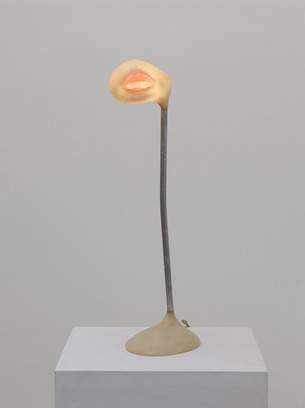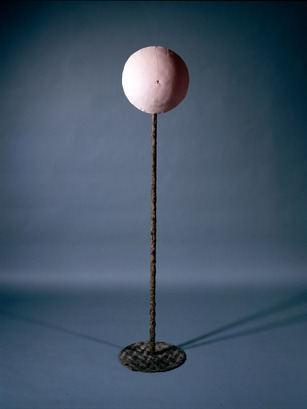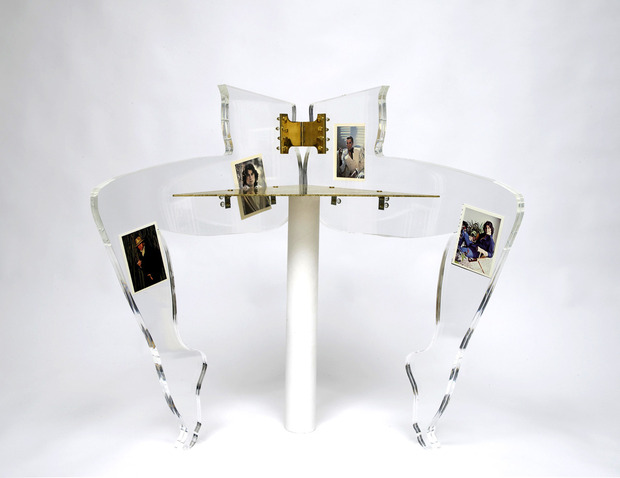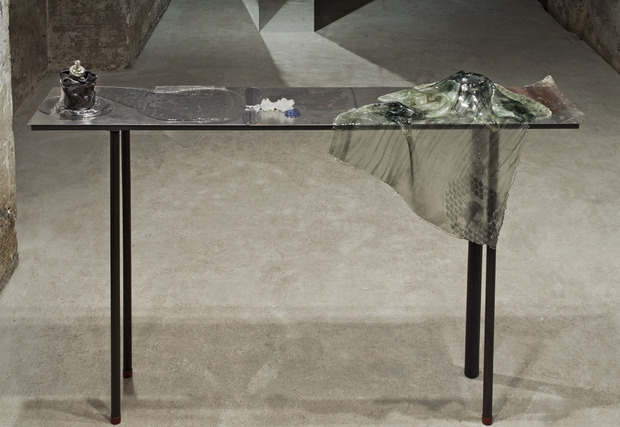That Obscure Object of Desire
A gallery exhibition that explores the disparate connections between art and fetish



It all begins with Luis Buñuel. The Spanish filmmaker’s 1977 masterpiece not only lends its name to a new group exhibition opening at NYC’s Luxembourg & Dayan gallery, but also the inspiration behind unifying disparate artists with a universal subject. In the film “That Obscure Object of Desire,” obsession leads to exploration, fetishization and submissiveness. The group show indulges all of the above, but charts a more specific path: the darker side of desire and how it has manifested in the making of erotic objects. All the artists showcased within compose a highly imaginative, oddly sexual and often surreal experience of form and subject. “That Obscure Object of Desire” is about sex, yes, but more importantly it’s about the sexualization of materials.


Some of the work on display dates back to 1949, as seen in Hans Bellmer’s hand-tinted photographs from his art and poetry book “Les Jeux de la Poupée.” Therein, the surrealist has constructed scenes of faceless puppets, each eccentric and sexualized, yet highly disturbing. When hideous, a viewer cannot deny the latent fetishization of limbs and what they mean for sexuality. This mix of awe-inspired and off-putting emotions continues through other works, be that fellow surrealist Dorothea Tanning’s sculpture, or works on paper from the late ’60s and early ’70s, or the near-explicit sculptural works of Hannah Wilke and Alina Szapocznikow. A balance is toed and imagination plays the fundamental part.

Among the more recent works, Anthea Hamilton contributes pieces, including “Leg Chair (John Travolta)” (2010) which cites John Travolta memorabilia as one of its primary components and manifests as a provocative shrine to the actor, as images of him are placed between two spread-eagle legs. Alisa Baremboym’s emollients-based lamp plays upon the uncanny, with lips spread wide begging the question: what is natural? And these are only a few examples of what’s at hand in the exhibition—an amalgamation of styles, genres and media all in service to obscure sexulation.

Luxembourg & Dayan’s co-curators, Stephanie Adamowicz and Tamar Margalit, offered further insight on the the assembling of artists and the experience it begets. “We liked the idea of creating an intimate dialogue between artworks from different decades, which stem from disparate artistic agendas or what might be classified as disparate ‘artistic movements.’ There seems to be a clear sense of echoing and reverberations intuitively taking place between the various works—for example, the bizarrely erotic body configurations of the dolls created by Hans Bellmer in the 1930s and 1940s echo the sinister fragmentation that takes place in Robert Heinecken’s photo-compositions, or the isolated body parts seen in Alina Szapoczinokw’s Lampe Bouche and Dorothea Tanning’s Traffic Sign,” they explain to CH. “So it was more about striving to create a dynamic and lively interaction between the works, rather than attempting to present an all-encompassing survey, or a neat art historical account of a theme.”

Further, the duo explains, “The whole show and the installation is very much conceived with the viewer’s body in mind. After all, you can’t have a show tackle the notions of eroticism without thinking of how one’s body physically relates to the artworks on view.” Certain works double as furniture and the entire exhibition space—which they describe as “an intimate setting of a narrow townhouse with domestically-scaled rooms”—becomes transformative. Ultimately, they say, “We hope to have the viewers’ senses aroused, and for them to leave intrigued.” Between the art, the environment and the intrigue surrounding it all, this is an exhibition not to miss.
“That Obscure Object of Desire” runs from 14 August through 4 October 2014, at Luxembourg & Dayan, located at 64 East 77th Street, New York City.
Hans Bellmer images courtesy of Miguel Abreu Gallery, Dorothea Tanning image courtesy of The Dorothea Tanning Foundation/Artists Rights Society, Alina Szapocznikow images courtesy of The Estate of Alina Szapocznikow, Anthea Hamilton image courtesy of the Collection of Beth Rudin De Woody, Alisa Baremboym image courtesy of 47 Canal, New York, and Robert Heinecken image courtesy of The Robert Heinecken Trust, Chicago.









